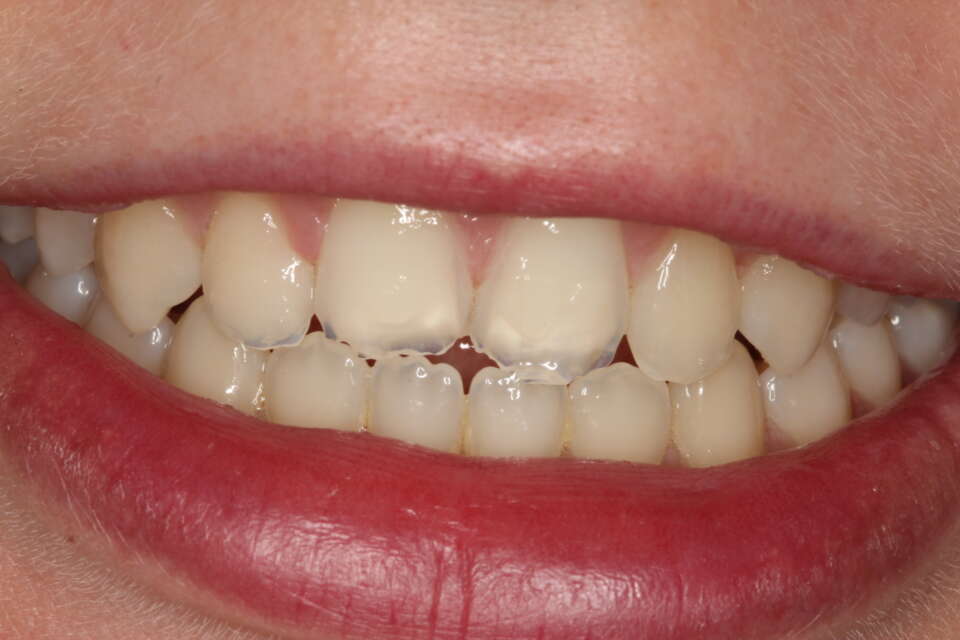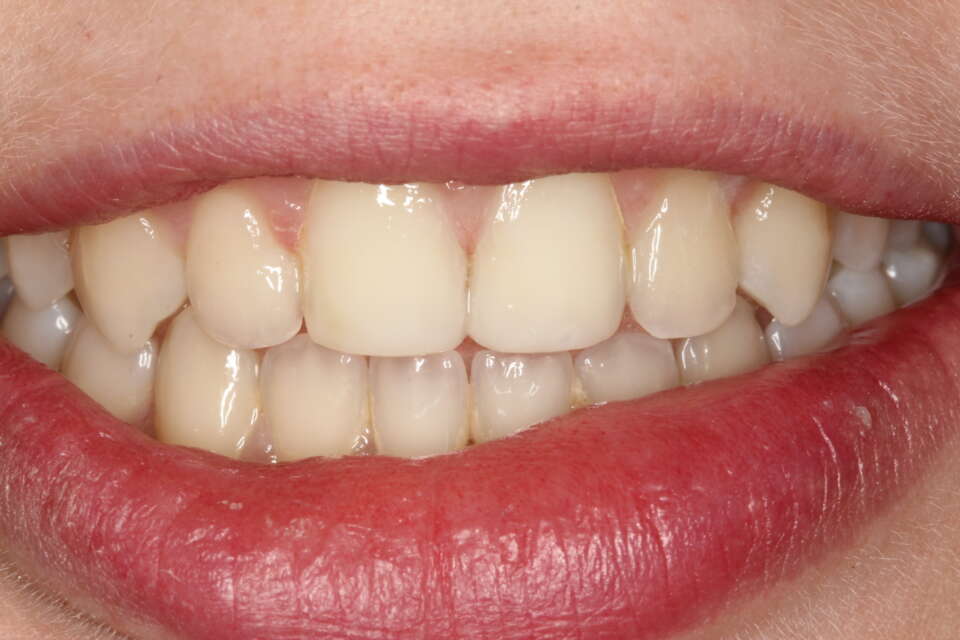One of the most common cosmetic dental treatments we provide at our Fulham dental practice on a daily basis is composite bonding or composite edge bonding. Now, let us explain what composite edge bonding is exactly. This is where a tooth, normally a front tooth, is enhanced by adding composite ( which is a white filling material). This would usually be to change the shape such as the length or width, to repair a chip or fracture or protect a worn down tooth. For edge bonding, the composite typically just replaces PART of the tooth and there is usually a bevel finish where the composite is blended in with some sound tooth enamel. Most of the tooth away from the edge bonding remains exactly the same.
This is inherently different from a composite veneer where the composite covers ALL of the outer surface of the tooth right up to the gum level.
What Is Composite Edge Bonding And How Is It Different To Composite Veneers?
|
|
The Process for Composite Edge BondingThe first thing to say about edge bonding is that the process is minimally invasive and there is no need to drill the underlying tooth. The process is completely pain free. Here is a step by step guide: 2. Take photographs 3. We then provide a mock up showing you how the tooth could look with the bonding and agree on a shade ( we generally always advise whitening before edge bonding) 4. Clean the tooth using alumina oxide and phosphoric acid and apply a bonding resin ( this is a liquid). Our bonidng resin of choice is 3M Scothbond Universal. 5. Layer the composite in increments using special pads and brushes 6. Each layer needs to be light cured using a special blue light which acts to harden or polymerise the compoiste. 7. We may need to use strips, tape ( PTFE tape is excellent) or wedges between the teeth to prevent the composite sticking to the adjacent tooth 8. Once fully built up, an initial contouring is needed using polishing drills and lots of water 9. Finer polishing is then needed using discs and special polishing rubber wheels. 10. We check the bite, check the contacts for cleaning and take final photos. Done! |
Case of the Month May 2024Our case of the month for May 2024 is a classic composite edge bonding one where we had extremely thin tooth enamel which was in desperate need of protection. The steps above were followed to not only protect the teeth but also improve the aesthetics. |

Just look at how translucent the edges of the teeth are here. It is only a matter of time before they fracture which will lead to more extensive and invasive treatment in the future.

Composite edge bonding completed in one visit and now the tooth enamel is fully protected and our patient can smile!
How to look after composite edge bondingAs the old saying goes, nothing lasts forever! The same is true for edge bonding and there is maintenance that is required. Over the years, further polishing, stain removal, re layering and repair is likely. As the treatment is drill free, the mainteance is easy and hassle free. We always advise using a night guard to protect your teeth which will increase the longevity of your teeth with or without bonding. You may not realise but if you grind your teeth at night, there is something like 300 times more contact than during the day time! A recipe for broken teeth. |
Treatment completed by Dr Nissit Patel. Book your FREE VIDEO CONSULTATIONIf you are thinking of composite edge bonding and need to speak with our clinical director, Dr Nissit Patel, please book your free video consultation. |

